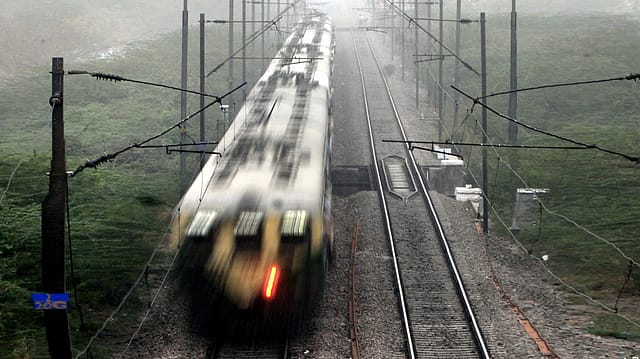NCR rapid transport corridor weighs models to rake in 8% returns
ADVERTISEMENT

As the National Capital Region Transport Corporation (NCRTC) gears up to commence the operation of the first section on the Delhi – Meerut rapid regional transit system (RRTS), the body is also looking at various revenue generation models to generate an internal rate of return of 8%. The various models include real estate (both lease and sale), value capture financing to capture the additional FAR and advertisement, among others.
In the first phase, NCRTC is developing three rail-based RRTS systems connecting Delhi to Meerut, Alwar (via Gurgaon) and Panipat at an indicative capital cost of over ₹1 lakh crore. Construction of the ₹30,274 crore Delhi–Ghaziabad-Meerut corridor (82 km) is in advanced stage and the first stretch (17 km) between Sahibabad and Duhai will be open for public in March next year. The entire corridor will be ready by 2025. The detailed project reports (DPR) for the other two corridors have not been approved yet.
The funding structure of the Delhi Meerut corridor includes soft loans from multilateral agencies such as Asian Development Bank, Asian Infrastructure Investment Bank and New Development Bank. While ADB has provided a loan of $1 billion, both AIIB and NDB have sanctioned $500 million each. The balance contribution to the capital cost will be made by the central government, and the states. Similar model will be followed in the case of other corridors to be implemented by the corporation.
January 2026
Netflix, which has been in India for a decade, has successfully struck a balance between high-class premium content and pricing that attracts a range of customers. Find out how the U.S. streaming giant evolved in India, plus an exclusive interview with CEO Ted Sarandos. Also read about the Best Investments for 2026, and how rising growth and easing inflation will come in handy for finance minister Nirmala Sitharaman as she prepares Budget 2026.
The NCRTC, meanwhile, is working on various models to to establish revenue channels from the project over and above the fare box revenue. "The financial internal rate of return (FIRR) is about 8%. NCRTC is exploring various non-fare box revenue options like TOD, advertising, semi-naming rights among others, along with fare box revenue to achieve the return on investment," Vinay Singh, managing director at NCRTC, told Fortune India.
The corporation is also looking at the value capture model to exploit the real estate opportunities and establish a revenue stream for the project. Under value capture financing, the government recovers a share of the value the project generates. It can be in the form of additional FAR, or development levy, among others. It may be noted that in case of UP, the NCRTC is likely to have a 50:50 sharing with the state government.
"The other revenue channels will include advertisement on train stations, telecom usage charges, and retail. Property development including sale as well as lease will also be used as a revenue generation model," Singh said.
It may be noted that the construction period in the project is six years as per the agreement with the multilateral agencies. The repayment period of seventeen years will begin after a moratorium of two years after the construction period. In case of failure by the corporation to pay the loan, the centre as well as the concerned states will have to service the debt.
On its part, the NCRTC has tried its best to save upon capital cost by rationalising the capital and operational expenditure in order to make the project viable in the long run. "We have rationalised the capital cost by integrating the three corridors at Sarai Kale Khan, thereby reducing the number of terminals. Secondly, the equipment manufacturers have been given the contract to maintain and operate the assets. This leads to fixation of the operational cost and higher visibility as liabilities are fixed for a long period of time," Singh said.
